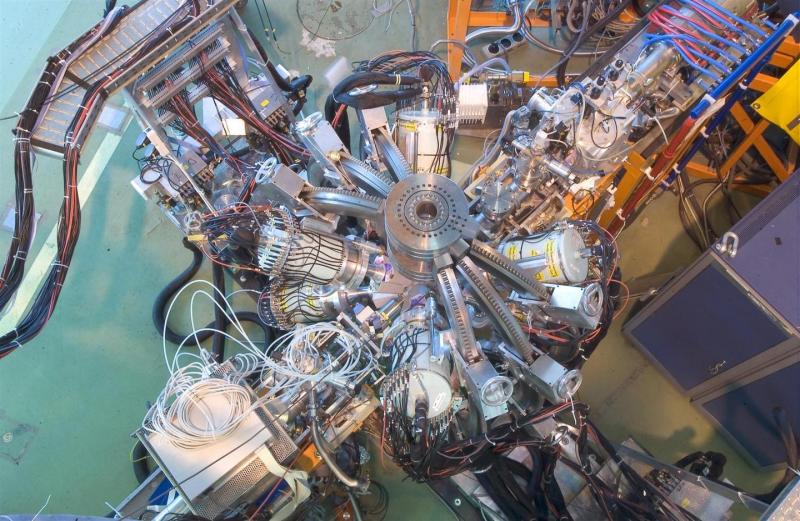Property of Rarest Element on Earth Measured for 1st Time

A fundamental property of the rarest element on Earth, astatine, has been discovered for the first time, scientists say.
Astatine occurs naturally; however, scientists estimate much less than an ounce in total exists worldwide. For a long time, the characteristics of this elusive element were a mystery, but physicists at the CERN physics laboratory in Switzerland have now measured its ionization potential — the amount of energy needed to remove one electron from an atom of astatine, turning it into an ion or a charged particle.
The measurement fills in a missing piece of the periodic table of elements, because astatine was the last naturally occurring element for which this property was unknown. Astatine, which has 85 protons and 85 electrons per atom, is radioactive, and half of its most stable version decays in just 8.1 hours, a time called half-life. In 1953, Isaac Asimov estimated the worldwide total of astatine in nature was 0.002 ounces (0.07 grams). [Graphic: Nature's Tiniest Particles Explained]
To measure astatine's ionization potential, physicists at CERN's ISOLDE (Isotope Separator On Line-Detector) Radioactive Ion Beam facility created artificial isotopes of astatine (atoms with different numbers of neutrons than those occurring in nature) by shooting beams of energetic protons at a target of uranium (which has 92 protons and electrons). The collisions created a shower of new particles, some of which were astatine.
The physicists then shined laser beams of varying wavelengths at the atoms to ionize them. By isolating the astatine ions, and checking which wavelength of laser had created them, the researchers determined astatine's ionization potential to be 9.31751 electronvolts (the ionization potential of hydrogen, for example, is 13.6 electronvolts).
The value will serve as a benchmark for studying exotic superheavy elements, which don't occur naturally, but can be created at specialized labs. For example, researchers want to compare the properties of astatine with those of the newly discovered element 117, first created at Russia's Joint Institute for Nuclear Research (JINR) in 2010. This element, the second-heaviest ever created, is a homologue of astatine, meaning that it sits right below astatine on the periodic table and likely shares similar properties.
"In-source laser spectroscopy today is a most sensitive method to study atomic properties of exotic short-lived isotopes," Valentin Fedosseev, team leader of ISOLDE's resonance ionization laser ion source, said in a statement. "It is well-suited to explore the spectra of artificially produced elements, like the superheavy ones. The success in this study of astatine has added confidence for similar projects started recently at GANIL, France, and at JINR, Russia." (GANIL stands for Grand Accélérateur National d'Ions Lourds, or the Large Heavy Ion National Accelerator.)
Get the world’s most fascinating discoveries delivered straight to your inbox.
The new discovery could also help scientists develop medical applications for artificial astatine, which might be useful in radiotherapy treatments for cancer called alpha therapy.
"None of the many short-lived isotopes used in medicine exist in nature; they have to be artificially produced by nuclear reactions," said Bruce Marsh, a resonance ionization laser ion source team member. "The possible medical isotopes of astatine are not so different in this respect. What is different about astatine is that its scarcity in nature makes it difficult to study by experiment, which is why this measurement of one of the fundamental properties is a significant achievement."
Follow Clara Moskowitz on Twitter and Google+. Follow us @livescience, Facebook & Google+. Original article on LiveScience.com.



